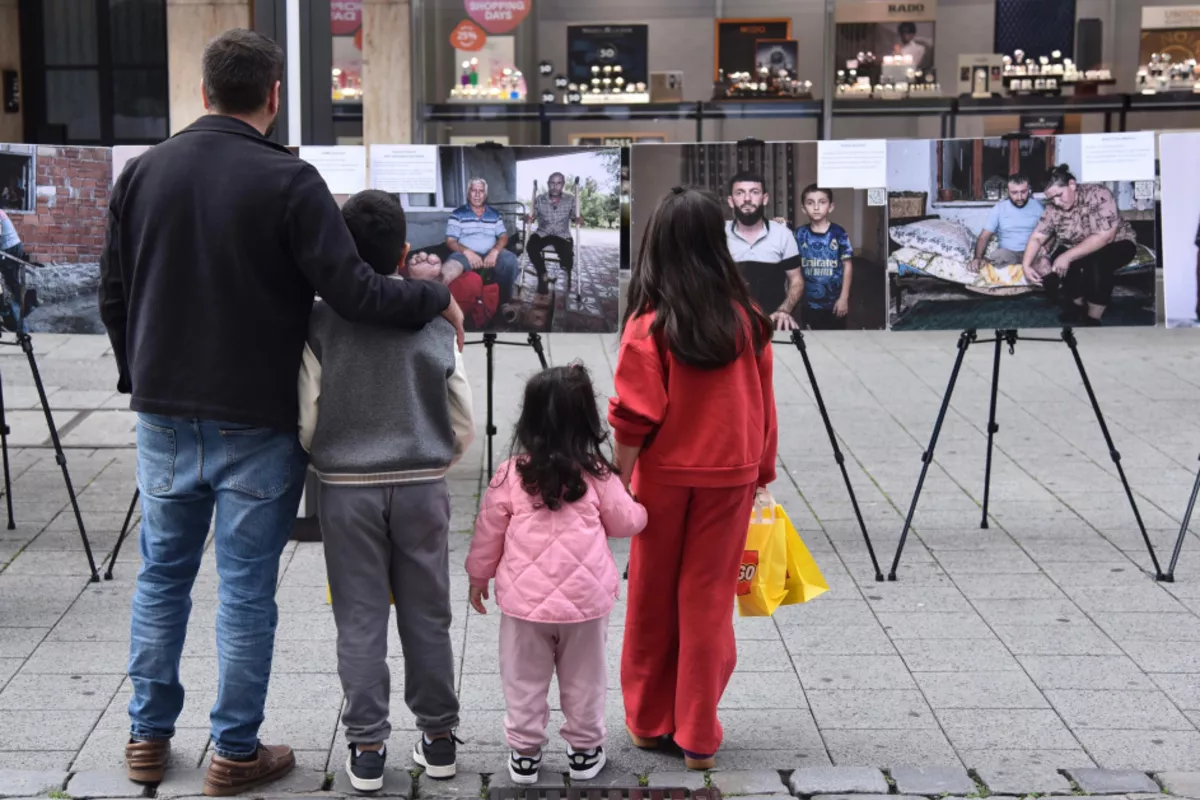
Photo: AZERTAC
On September 27, an open-air photo exhibition dedicated to the victims of landmines in Azerbaijan took place in the historic center of Nuremberg, Germany.
The exhibition was set within the city’s ancient walls, a popular site visited by international tourists, The Caspian Post reports, citing local media.
The exhibition was organized as part of the “Point of CulMINAtion of Danger” project, implemented by the “Gilavar” Photo Club Public Union with the support of the Agency for State Support to Non-Governmental Organizations of the Republic of Azerbaijan. The project’s local partner was the Baku-Nuremberg Culture and Education Center.
Rashad Mehdiyev, Chairman of the “Gilavar” Photo Club Public Union, noted that hosting the exhibition in Nuremberg on the Remembrance Day of the Patriotic War martyrs carried special significance:
“After World War II, from 1945 to 1946, Nazi leaders were tried in an international tribunal here. For this reason, Nuremberg - a city where war criminals were punished and justice was upheld - holds a unique place in the history of international law. We believe that the military-political leaders of Armenia, who ordered the planting of over one million mines in Azerbaijani lands during the 30-year occupation, will also be held accountable for these war crimes. That is why, on Remembrance Day, we are addressing the world from Nuremberg.”
The photographs conveyed powerful messages from mine victims. A photo of Parviz Najafov, a mine victim who worked in road construction, carried the words:
“I was building roads to bring people together, not to separate them as the mines have done. One blast took my eye and my leg; another scarred those who tried to rescue me. Tell me, how many times can hope explode in the same place?”
Another victim, Khazar Babashov, addressed visitors through his photo:
“Am I to blame? Yes or no? Write your answer on the paper below the photo. I’ll be waiting for your response. I was a driver, trying to safely transport people from one place to another. I took one step out of my vehicle. An explosion rang out. And my life was shattered forever. I still question myself: if I hadn’t stepped there, would this have happened? Tell me, am I to blame? Perhaps your answer will finally put an end to the questions tearing me apart.”
The exhibition drew strong interest. Visitors not only learned about the scale of Azerbaijan’s mine problem through statistics but were also deeply moved by the photographs.
This exhibition followed a similar event held on September 26 in Munich’s central Karlsplatz square. The Nuremberg display featured more than 20 photographs and stories of mine victims, each reflecting not only individual tragedies but also the broader humanitarian catastrophe faced by the Azerbaijani people. Additional information about the victims was made accessible through QR codes on the photos.
The “Gilavar” Photo Club Public Union plans to continue the exhibition in other European countries.
Share on social media